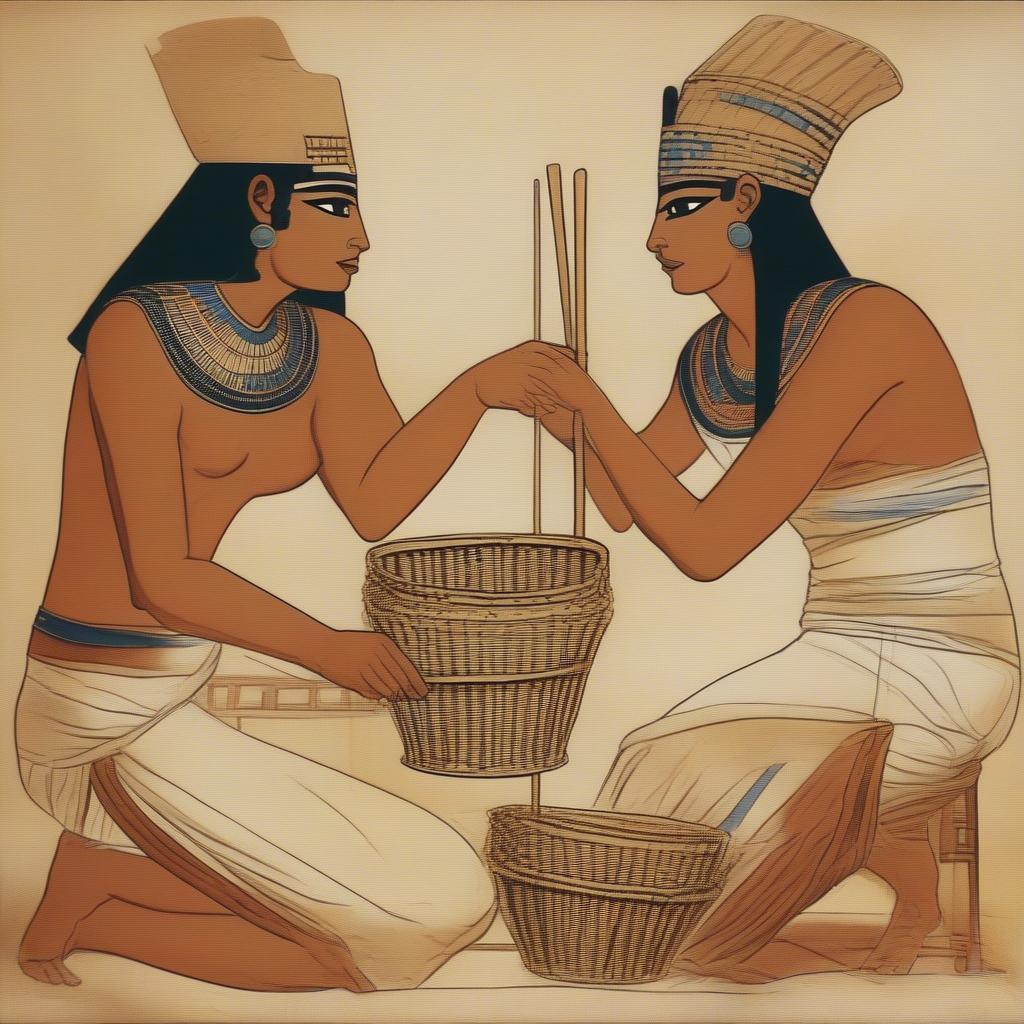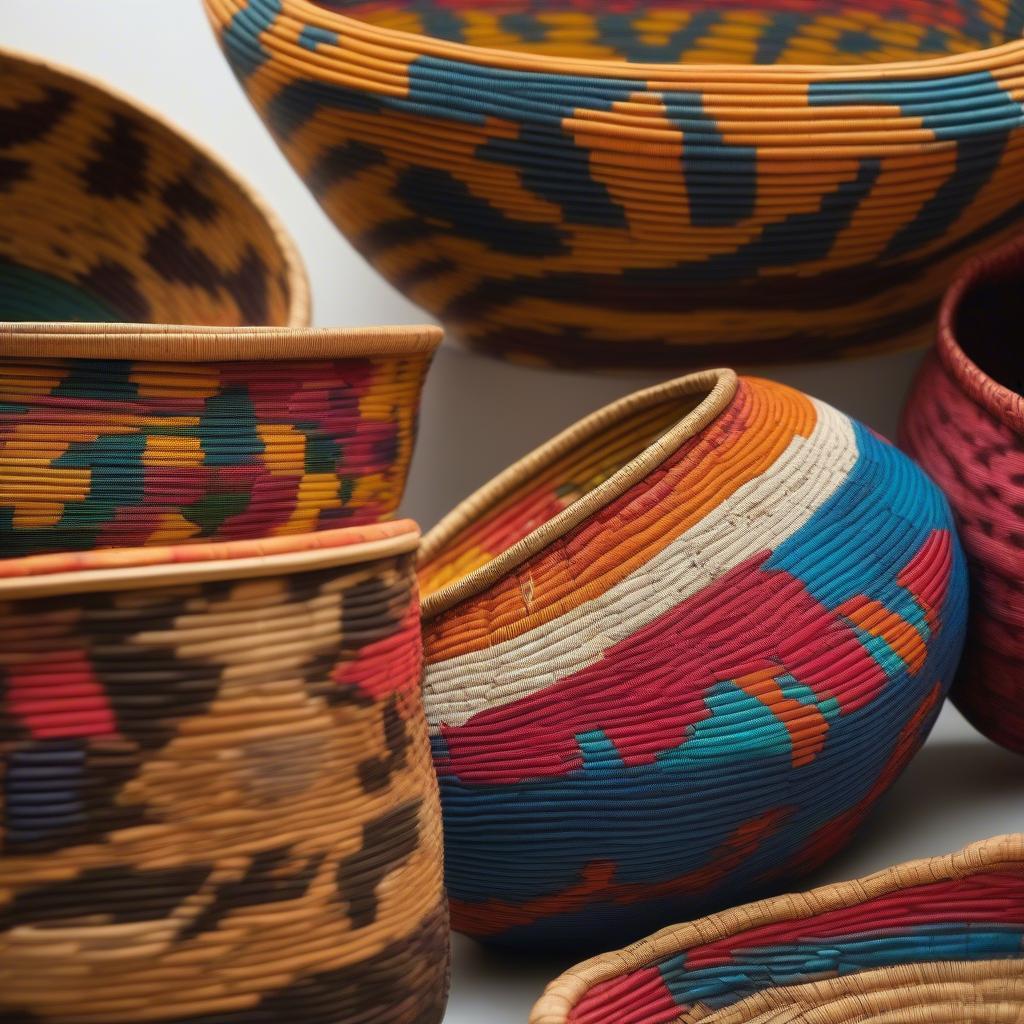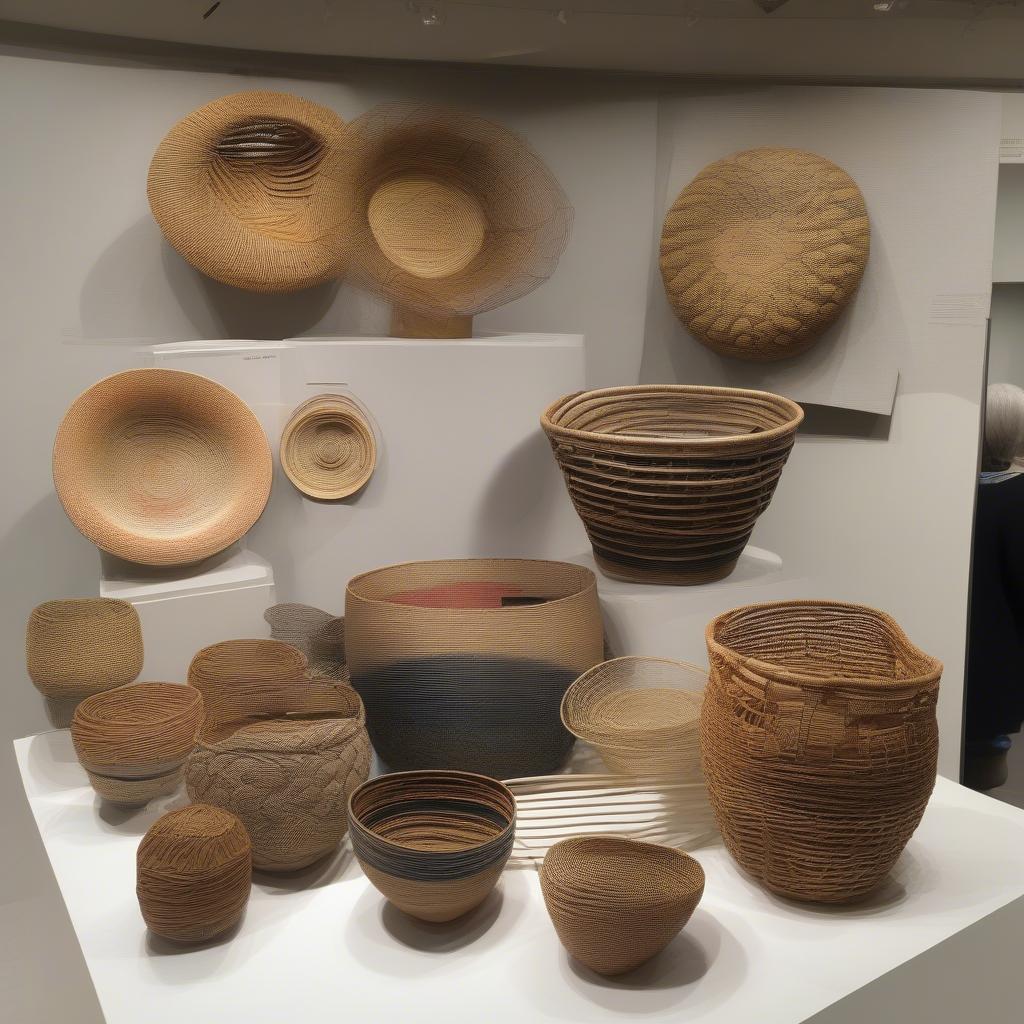Basket Weaving
Basket Weaving Cultural Significance: A Timeless Tradition
Basket Weaving Cultural significance spans millennia, representing not just a practical craft, but a powerful expression of artistry, heritage, and community identity. From ancient civilizations to modern artisans, the art of basket weaving continues to hold a special place in human culture.  Basket Weaving in Ancient Egypt
Basket Weaving in Ancient Egypt
The Cultural Roots of Basket Weaving
Basket weaving is arguably one of the oldest crafts known to humankind, predating pottery and even agriculture in some regions. The earliest known baskets, discovered in the Middle East, date back over 10,000 years. These woven vessels were essential for gathering, storing, and transporting food and materials, playing a vital role in the survival and development of early societies. Over time, what began as a purely utilitarian practice evolved into a rich art form, imbued with cultural symbolism and artistic expression.
Evidence of basket weaving’s importance is found across diverse cultures. In many Indigenous communities, native american basket weaving stolen became a significant issue reflecting the cultural value placed on these items. The unique weaving techniques and designs passed down through generations often hold deep spiritual and ancestral meaning. Baskets can tell stories, represent clan lineages, or embody important beliefs and values.
 Intricate African Basket Weaving Patterns
Intricate African Basket Weaving Patterns
Basket Weaving: A Reflection of Community and Identity
Basket weaving often serves as a powerful symbol of community and identity. The process of harvesting materials, preparing them, and weaving them together fosters a sense of connection to the land and to one another. In many cultures, basket weaving is a communal activity, bringing people together to share stories, skills, and laughter. The unique styles and techniques specific to a particular region or tribe contribute to a distinct cultural identity, distinguishing one group from another. basket weaving in swaziland is an excellent example of how the craft is deeply intertwined with local culture and heritage.
How Basket Weaving Has Adapted to Modern Times
While traditional methods and materials remain vital, basket weaving has also adapted to modern times. Contemporary artists are experimenting with new materials, incorporating recycled plastics or even metal wires into their creations. This fusion of tradition and innovation reflects the ongoing evolution of basket weaving cultural significance in the 21st century. basket weaving nigeria hairstyle offers another example of this adaptation, showcasing how the craft can influence even hairstyles and fashion trends.
 Contemporary Basket Weaving Art
Contemporary Basket Weaving Art
Preserving the Cultural Legacy of Basket Weaving
Protecting the cultural legacy of basket weaving is crucial. Supporting artisan communities, encouraging the transmission of traditional knowledge to younger generations, and promoting the appreciation of basketry as a vital art form are essential steps in safeguarding this ancient craft. Documenting and sharing the stories behind the weaves, like exploring the history of shoshone basket weaving, can help preserve the rich cultural heritage embodied within each basket.
“Basket weaving is more than just a craft; it’s a living embodiment of cultural memory,” explains Dr. Amelia Reed, an anthropologist specializing in textile arts. “Each basket holds within its weave the stories, traditions, and values of the people who created it.”
Conclusion
Basket weaving cultural significance continues to resonate throughout the world. From its practical origins to its artistic evolution, basketry embodies a deep connection to nature, community, and human ingenuity. By understanding and appreciating the cultural heritage woven into every basket, we can help ensure that this timeless tradition thrives for generations to come. You can even learn about the cultural impact of basket weaving through film by exploring native american basket weaving movie quote.
FAQ
- What are the most common materials used in traditional basket weaving? Materials vary depending on the region, but common examples include willow, rattan, reeds, grasses, and various plant fibers.
- How long does it take to weave a basket? The time required varies depending on the size, complexity, and technique used. It can range from a few hours for a simple basket to weeks or even months for intricate pieces.
- What is the cultural significance of basket weaving in Native American communities? Basket weaving often plays a vital role in ceremonies, storytelling, and preserving cultural heritage within Native American communities.
- Are there any modern applications of basket weaving techniques? Yes, basket weaving techniques are being used in contemporary art, architecture, and even fashion design.
- How can I learn more about basket weaving cultural history? Museums, cultural centers, and online resources offer a wealth of information on the history and significance of basket weaving.
- What is the difference between wicker and rattan? Rattan is a natural material derived from a type of palm, while wicker refers to the weaving technique itself and can be used with various materials.
- How can I support the preservation of basket weaving traditions? Purchasing handmade baskets directly from artisans, attending workshops, and advocating for cultural preservation initiatives are all great ways to support this craft.
Need assistance? Please contact us at Hanoi, Vietnam, or Tech Avenue, Suite 12, San Francisco, CA 94105, USA. Our customer service team is available 24/7.
